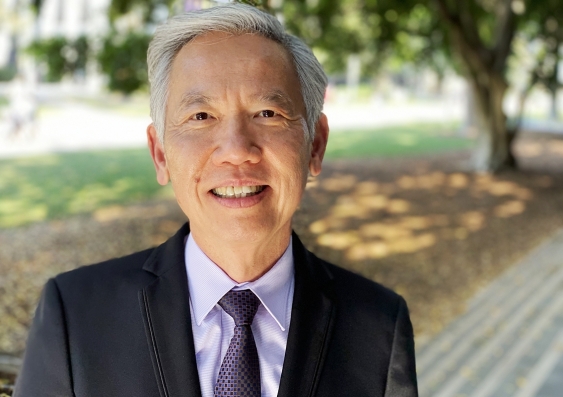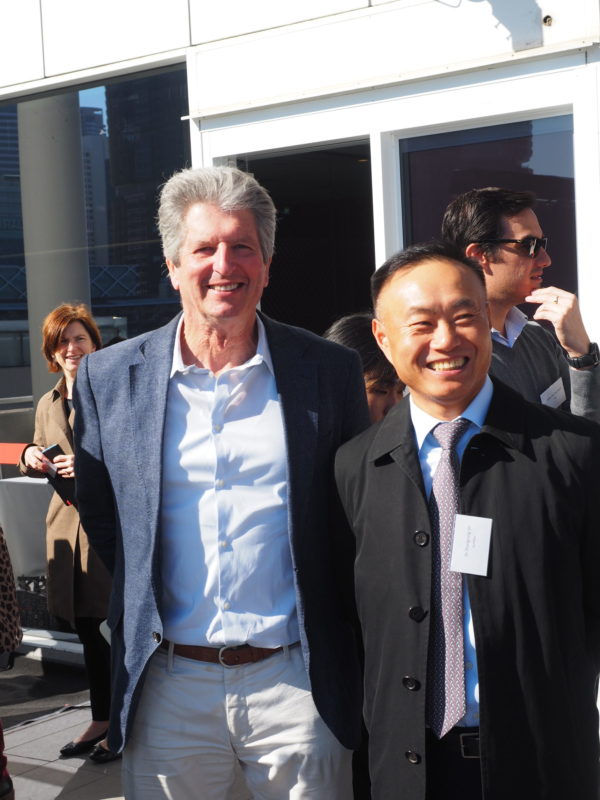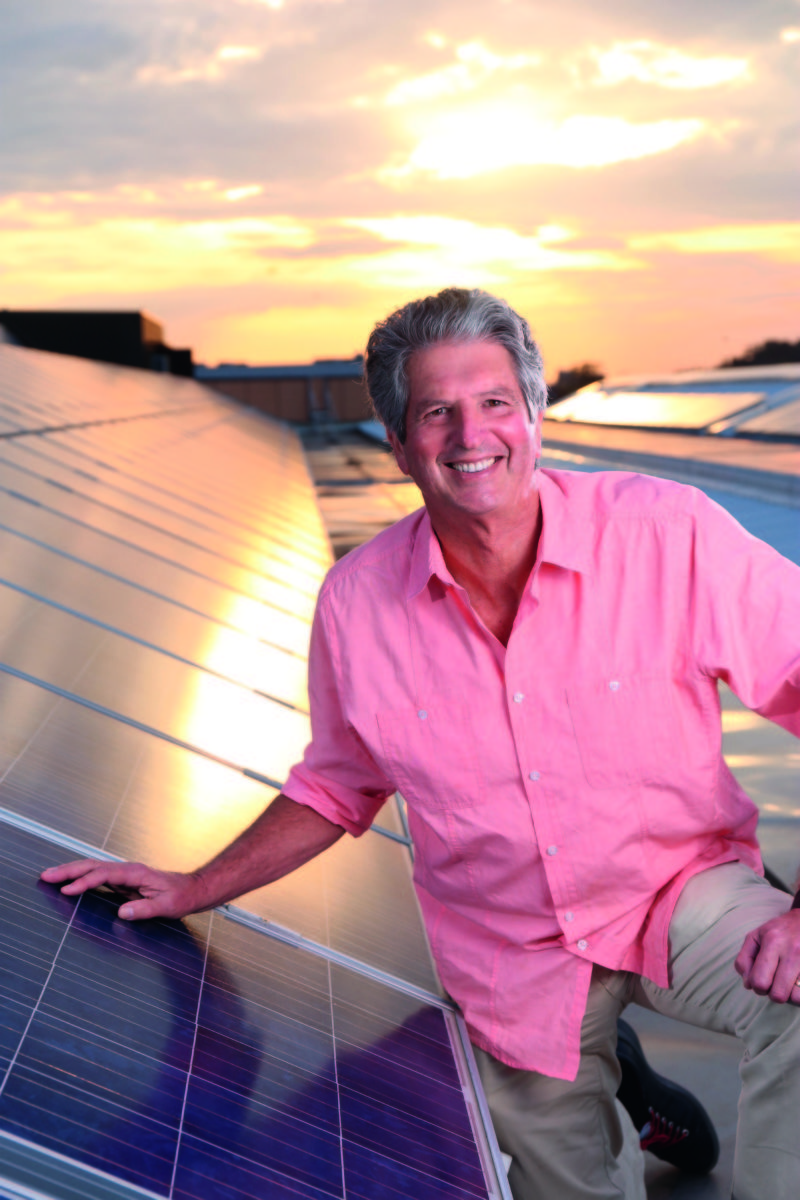The Australian Renewable Energy Agency has, over its almost 10 years of operation, become the obvious fit for funding of solar research projects at the University of New South Wales’ renowned School of Photovoltaic and Renewable Energy Engineering (SPREE), but with ARENA set to run out of funds under its current remit to 2022, longer-term projects have no funding avenue, PhD students are being turned away, and the SPREE ecosystem is under threat, says Senior Lecturer with the school, Dr Richard Corkish.
Talk to any SPREE researcher and their appreciation of ARENA runs deep. Over the past 10 years around 80% of the group’s funding has come from the agency.
On the other side of the solar sell, UNSW’s Scientia Professor Martin Green invented the Passivated Emitter and Rear Cell (PERC), which now accounts for 70% of the global solar market, and SPREE research has consistently set world records for improving solar cell efficiency — technology it has then licensed to manufacturers and which has boosted solar energy output worldwide, helping to make solar PV not only the cheapest source of energy, but the greatest successful source of emissions reduction. The application of PERC cells alone has avoided around 1% of annual global emissions.
The success of solar, says Corkish, has led to governments globally saying, “That work is done, solar is now cheap”, and researchers should look elsewhere for funding.
Technology versus … technology?
In Australia, Angus Taylor, Minister for Energy and Emissions Reduction said in February that the Commonwealth had invested $10.4 billion in some 670 clean-technology projects but heralded a change of direction with the announcement of the yet-to-materialise Technology Investment Roadmap as the new “cornerstone of our long-term emissions reduction strategy”.
He said, “We must move our investments to the next challenges … Hydrogen, carbon capture and storage, lithium and advanced livestock feed supplements, to name a few.”
Corkish does not dispute that the next phase of renewable-energy work should be high on the funding agenda, although he names better integration of renewables into the grid and rethinking of energy markets to reflect the services offered by various renewable-energy components as among the most important priorities.
In fact, he says solar researchers in Australian universities are already addressing these issues, but he argues that the science in which UNSW, the Australian National University, Monash University and CSIRO are engaged represents areas of deep expertise and potential that can greatly boost the benefits of using solar for an ever greater proportion of the world’s energy needs.
“I don’t think we deserve to be kept in jobs just because we’ve been good in the past. That’s not the point,” he tells pv magazine. “The point is that we have more to contribute.
Towards a fast and increasingly effective transition
“Because we’re leaving it very late before making serious efforts to rein in climate change, I think the world is going to struggle,” says Corkish. “We will have to cut emissions quickly and deeply.”
The SPREE team’s groundbreaking work in applying hydrogen to reducing degradation of solar cells and boosting cell efficiencies is particularly relevant to ongoing application of solar as a primary energy source, because it increases the output of solar cells, and extends the lifetime of modules which again improves the output of installed plant.
And these are frequently the kinds of technology advances that can be relatively easily incorporated into existing manufacturing.
The applications of hydrogenation, discovered and pioneered by the late Professor Stuart Wenham and continued under the guidance of Professor CheeMun Chong, are among the resources of human expertise and laboratory facilities that UNSW has built over decades, and which are at risk without continuous and ongoing funding commitment.

Image: UNSW/Lachlan Gilbert
Fostering learning at the cutting edge
The university model the world over is that lecturer/researchers are attracted to universities doing work at the cutting edge of their fields, and that students at the top of their game are drawn to study with and be supervised by them.
“It means that teachers need to be winning research grants; we as a group need to be winning research grants,” says Corkish, because universities themselves cannot afford to fund the research on top of running their institutions.
SPREE has been highly successful in partnering with solar manufacturers to fund research into technologies which the university then licenses back to them. This also gives students the opportunity to work with industry, where their skills will ultimately be deployed.

Photo: pv magazine
Understandably, the industry is keen to partner on research that delivers rapid returns — projects deemed to have a high technology readiness level (TRL) and low risk that can be applied to their production lines within the shortest amount of time.
For five years prior to 2012, SPREE received consistent research funding for projects across the TRL spectrum from the Australian Solar Institute, after which time remaining ASI funds and projects were rolled into ARENA, which was established at the start of 2013.
Corkish says UNSW is currently applying for ARENA funding for both solar cell research and end-of-life management of solar panels — work that will be complete by the end of 2022, when all remaining projects must report back to the agency.
ARENA’s vital role in renewable industry pilots and research
The difficulty lies in not knowing the future of ARENA. Minister Taylor contends, “the government has always said that ARENA’s funding will be addressed in the most appropriate budget context”.
Early this year, The Australia Institute called for an urgently needed top up of $460 million to maintain continuity of ARENA funding through to the end of 2024, thus addressing the drying up of funds anticipated in mid-2020.
TAI called for a total package of $2.5 billion over the coming 10 years, to enable ARENA to advance work on the “next renewable energy challenges for Australia, of grid integration, storage and reliability, as well as new export opportunities in green hydrogen and zero-emissions electricity.”
The Clean Energy Council has also lobbied for ARENA to be extended to 2030 with funding of $2 billion.
“ARENA has been extraordinarily successful over the last five years,” CEC Chief Executive Kane Thornton told pv magazine in March. “Given the Federal Government’s focus on new technology, I think it’s very likely that ARENA will be extended and receive further funding. Doing otherwise would be short-sighted and simply make the transition harder and more expensive,”
Researchers and PhDs are reliant on the long view
For universities such as UNSW, the problem lies in current applications for PhDs — new researchers bringing fresh thinking and exploring new avenues of research — who must be funded for the three-and-a-half years it takes to complete a body of original work.
“That money normally comes from research grants,” says Corkish, and the majority of the university’s research grants — which are provided by ARENA — will conclude at the end of 2022.
Teaching/research staff will also begin to look elsewhere for employment if the research aspect of their work does not have a foreseeable future.
The long view can’t currently be accommodated, and PhD intake has been curtailed.
The importance of maintaining funding
“At UNSW, at ANU and more widely, we have a pool of talent and equipment, a teaching program we have built over the years for an industry that is becoming more and more important,” says Corkish. “But we might very soon see it wither away.”
He lists a dozen current long-term projects as evidence of the ongoing value of funding solar research. They include: UNSW’s work on the next wave of solar cell materials (Professor Green’s development of tandem cell structure and materials which promise to almost double the output of solar cells); research into thin solar-energy-generating films that can be integrated into buildings to power cities; analysis to ensure upcoming technologies offer the greatest value and cause the least environmental impact over their entire life cycle; and better understanding of the field performance of solar PV systems that will establish protocols for the most efficient maintenance practises.
Green last year told pv magazine that finding “a frontrunner to stick onto silicon” as part of the tandem-cell development is SPREE’s most important project – despite commercial application likely being some 10 years away.
The work of Chong’s hydrogenation team will allow solar cells to be made of far cheaper material than the current silicon, but produce the same amount of electricity: “It’s just the beginning for hydrogenation, as we learn to use it in various and more clever ways.”
Corkish urges the government to maintain solar research funding, in addition to enabling projects in other fields. He says, “We have a great team. We have a one-off chance to keep it running.”
This content is protected by copyright and may not be reused. If you want to cooperate with us and would like to reuse some of our content, please contact: editors@pv-magazine.com.









By submitting this form you agree to pv magazine using your data for the purposes of publishing your comment.
Your personal data will only be disclosed or otherwise transmitted to third parties for the purposes of spam filtering or if this is necessary for technical maintenance of the website. Any other transfer to third parties will not take place unless this is justified on the basis of applicable data protection regulations or if pv magazine is legally obliged to do so.
You may revoke this consent at any time with effect for the future, in which case your personal data will be deleted immediately. Otherwise, your data will be deleted if pv magazine has processed your request or the purpose of data storage is fulfilled.
Further information on data privacy can be found in our Data Protection Policy.